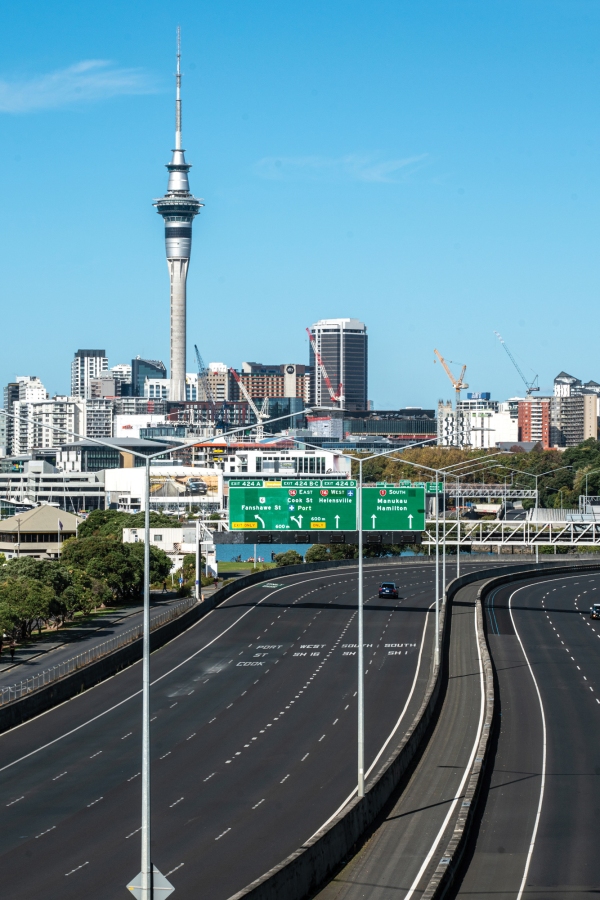Scientists commented that while there have been other incidents that led to measurable decreases in nitrogen dioxide (NO2) and nitric oxide (NO) emitted by vehicles and industry, none had been so intense or happened as quickly as the global shutdown prompted by Covid-19.
Pollution in New Zealand’s main cities followed similar patterns to those overseas. NIWA air quality scientist Dr Ian Longley kept a close eye on our air throughout Levels 4 and 3 and provided weekly updates. It was a complex exercise that necessitated the use of unverified data due to the many restrictions operating, but it provided a compelling insight into how much our air quality improves when we keep our cars at home.
Ian found that under Level 4, concentrations of road traffic exhaust pollutants were about 25–35% of normal in Auckland, Wellington and Christchurch. The drop was sharp and immediate but not quite as pronounced in Queen Street, Auckland’s main street, where the drop was about 45% of normal.
Throughout Level 3, when restrictions were eased, concentrations of traffic pollutants rebounded to between 47% and 63% of normal in Auckland and Christchurch and to about 75% of normal in Wellington. Level 2 saw levels more or less the same as pre-lockdown.
Ian says this rare occurrence has provided the opportunity for a natural experiment to improve our understanding of the different health impacts of air pollution.
“Although air quality changed dramatically across the cities monitored – and probably all other towns and cities too – the benefits would not have been experienced equally,” Ian says.
“Air quality was improved in our home neighbourhoods, around our workplaces and on the roads we use to travel from one to the other, but to slightly different degrees. Our personal experience was therefore determined by where we live and work and how we experienced lockdown.”
He says those benefiting most in Auckland would be people who normally commute during peak hours from a less polluted home location to a more polluted work location – especially downtown Auckland.
“Not only was air quality improved at home, but they would experience additional benefit from avoiding the downtown area, and not spending time in busy traffic. A rough estimate suggests these people – about 300,000 – could have reduced their exposure to traffic pollution by about 90%.”
Longley says this gain could have been experienced by hundreds of thousands more if through traffic, and especially diesel buses and trucks, had been removed from the city centre.
Lockdown, he says, has provided “vivid confirmation” of how in New Zealand’s windy cities – isolated from each other and international neighbours and where heavy industry is largely absent – pollutants can be made to vanish virtually overnight.
“Whether these reductions in exposure to air pollution will translate into improvements in health remains to be seen.”
He estimates it will be another 15–20 years before New Zealand’s cities experience similar air quality to this year’s lockdown, based on business-as-usual improvements in vehicle emissions technology.
“A rapid transition to electric buses, and establishment of zero-emission zones, will not only clean up our urban centres but should incentivise the adoption of zero-emissions transport across whole cities.”
Lasting changes in CO2 output will also take more deliberate action.
A recent Nature Climate Change article estimates New Zealand reduced its CO2 emissions by 41% during lockdown – more than any country except Luxembourg, which experienced a 44.6% drop.
However, NIWA climate scientists say this was only a temporary dip, and with activity levels quickly returning to normal, global emissions for the year are likely to be less than 5% lower than they would otherwise have been.
This article forms part of Water & Atmosphere July 2020, read more stories from this series.

